Dell Studio XPS 16 with RGB LED Display Review
Dell Studio XPS 16 with RGB LED Display
A 16in, Full HD, RGB LED display is the undoubted highlight of this multimedia powerhouse.
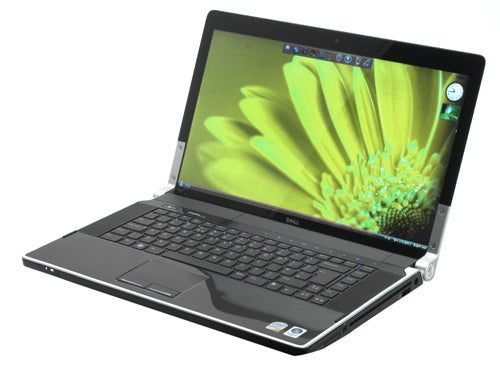
Verdict
Key Specifications
- Review Price: £1419.00
This gradual move to 16:9 aspect ratio displays in notebooks is starting to win us over. Yes, you do lose a few vertical pixels, but given we’ve seen such pleasures as the 1,600 x 900 13.1in effort in the Sony VAIO Z Series (see: Sony VAIO VGN-Z11WN/B) and the magnificent 1,920 x 1,080, RGB LED one in the Dell Studio XPS 16 we’re looking today, there are enough points in the ‘pros’ column to even things out. Clearly this is good news for Dell, then, since this is the first and only 16in notebook to sport such a display – the closest alternative being Sony’s 18.4in VAIO AW11XU/Q, which you won’t see south of £2,000.
Let us rewind a little, though, to explain what we’re actually talking about here. Chances are you’ll have heard of LED backlit screens; they’re very common among netbooks and any notebook whose aim is to be thin and light. However, RGB LED is the name given to a display that uses red, green and blue (hence RGB) LEDs, as opposed to just white LEDs as a backlight.
As a result the display in the Studio XPS 16 can reach something approaching 100 per cent of the Adobe RGB colour space, giving this machine one of widest colour gamuts you’ll see on a notebook. This is great for watching films or TV, but is arguably of more import to anyone editing images, where the high colour accuracy is of particular interest.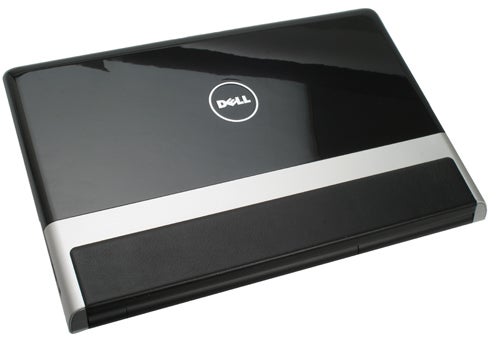
We’ll be taking a more detailed look at the images produced by this display a little later, but first we’ll take a cursory glance at the Studio XPS 16’s chassis. Anyone who read the review of the promising if slightly flawed Studio XPS 13 will recognise the lineage, since the 1640 (as it is also known) looks identical save for its obviously larger frame. However, measuring 33.95mm at its thickest, 24.1mm at its thinnest and weighing 3.06kg, it’s no porker, even if it doesn’t quite slip under the 3kg mark like Apple’s new 17in MacBook Pro.
In any case, the jury is still out on the new Studio XPS design. Our sample doesn’t exhibit some of the more alarming quality control issues of the 1340, such as the wobbly base, but there are points where the silver trim isn’t as firmly fixed as it ought to be and we’re still none too enamoured by the looks or durability of that leather strip on the lid. Still, the glossy black and silver accenting is a nice combination, as is the edge-to-edge ‘frameless’ display and backlit hinges.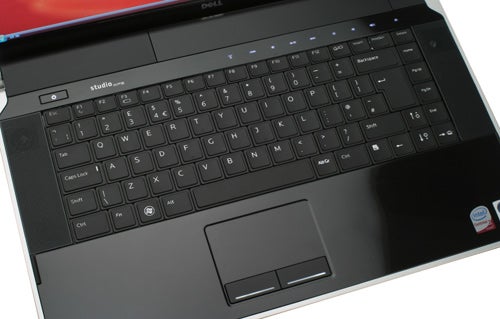
Speaking of backlighting, the other key standard feature on all Studio XPS machines is the backlit keyboard. As on the 1340, though, the non-isolated nature of the keyboard means a certain level of bleed when viewed from an angle. Our opinion of the keyboard hasn’t improved much, either. Its basic layout is fine, more or less perfect in fact, but keys are uneven and lack a little feedback. It’s not quite bad enough to make this machine one to avoid, but it does take a little getting used to.
Inside, our Studio XPS 16 is ideally configured for the photography enthusiast, with a rapid 2.53GHz Intel Core 2 Duo CPU with 6MB L2 Cache and a 1,066MHz front-side bus. This is matched by 4GB 1,066MHz DDR3 RAM and for those who are greedy for system memory you can specify as much as 6GB or 8GB of the stuff. For graphics there’s a 512MB ATI Mobility Radeon HD 3670 and Gigabit Ethernet, Draft-N Wi-Fi and Bluetooth all come as standard. 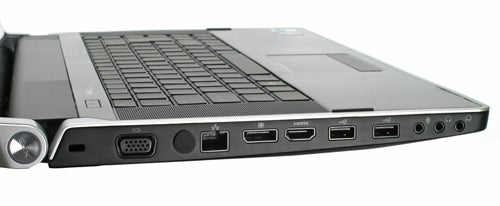
Our version also comes, not unsurprisingly, with a Blu-ray ROM drive as well as a TV Tuner, while storage is provided by a capacious 500GB drive. It also came pre-loaded with the Adobe Photoshop Elements and Premier Elements bundle (a £60 extra), though we’ve left this off the final £1,419.00 price since it’s, strictly speaking, an optional extra.
As for the rest of the range, there are four standard configurations, starting at £929 inc. VAT, though this configuration nets you a lower resolution, non-RGB LED 720p display, no Blu-ray drive and no TV Tuner. At first glance this would seem like pretty shoddy value of money, especially compared to the significantly cheaper and excellent HP HDX X16-1005ea that we reviewed at £869.99 with a 1080p display, Blu-ray and a TV Tuner. 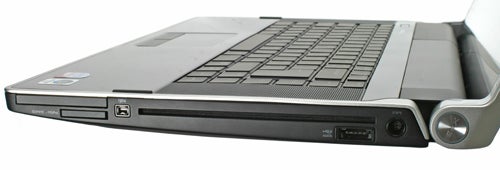
However, that was then and this is now and right now the weakening pound is pushing prices up, with the equivalent HDX 16 now priced at £1,099 online. Still, the lack of a non-RGB LED 1080p option on the Dell means an identical spec (with Full HD screen) to the HP means a higher final price of £1,238.99, so unless you truly desire after or need the high colour gamut of the Dell then the HP remains the better value investment. We should add, too, that despite being a multimedia machine, Dell doesn’t provide any kind of remote in the box. This is a pretty poor show given that HP manages to include two with its HDX machines.
Connectivity, though, as it was with the Studio XPS 13, is very good. You get three video connections, VGA, HDMI and DisplayPort, three USB ports, one of which is an eSATA/USB dual-function port, a 54mm ExpressCard slot, four-pin FireWire and a 5-in-1 memory card reader. An IR receiver is also present, despite the lack of an included remote, as are dual-headphone outputs and a microphone input. Above the keyboard, meanwhile, is the usual assortment of touch sensitive media keys – all of which work just fine.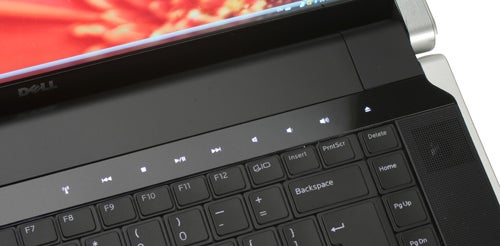
One other neat feature of the Dell is its power supply, which despite being a 90W unit, is quite thin and portable. This is matched by another signature Studio XPS feature, the highly useful power indicator on the power plug. Both these show that Dell is thinking in a slightly more practical way than most and it should be praised for this, even if its execution in other areas can sometimes be off the mark.
As you might expect, given this is a larger more multimedia orientated machine, the 1640 also features upgraded speakers over its smaller 13.3in cousin. These come in the form of two 7W drivers either side of the keyboard. Interestingly, Dell has chosen not to include any kind of mid/low-range sub-woofer underneath the machine. Ordinarily, we’d call Dell out for this, but partly because the speakers are reasonably good and partly because, however good the speakers, we’d still recommend a set of headphones or separate speakers, we’re not going to. We will, however, query the lack of Dolby Home Theatre (a valuable addition in our experience) as well as the irritating way the speaker grilles collect grime and rubbish that’s practically impossible to get rid of…grrrrrr.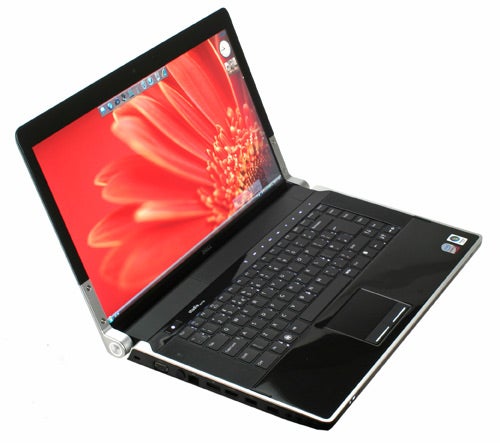
Putting aside such grumbles for now, though, it’s about time we get back to where we started: the display. As intimated it is a real gem. Its wide colour gamut is obvious from the moment you turn the machine on and though it’s arguably a little oversaturated out of the box, it’s nothing a little calibration won’t remedy – just remember that not all sensors can calibrate high colour gamut displays or ones with glossy finishes, so check first.
Nonetheless, as a whole, the colour fidelity of this RGB LED display is outrageously good compared to any other notebook display and even bests some decent desktop displays. We’ve never seen our high resolution test images look this good on a notebook before. Colours are bright, well defined and distinct and there’s plenty of fine detail in shadows. This prowess, particularly the colour vibrancy, was very well demonstrated by our colourful and fast moving game benchmark, Trackmania Nations Forever.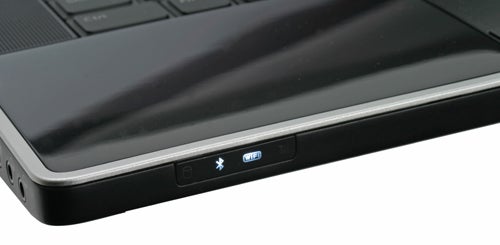
Moving to some HD video, the golden yellows, subtle browns and bright oranges of explosions in the helicopter chase scene from Sahara are breathtaking, as are the cacophony of colours and hues in the carnival scene from Ghost in the Shell 2: Innocence. Motion is also enviably smooth, though we’re not talking HDTV levels here, making this display just as good for film viewing as it is image work.
All-in-all, the display is a massive unique selling point for the Studio XPS 16. If put against, say, the 17in MacBook Pro – a traditional favourite among photographers and video editors – the Dell makes a very persuasive argument for itself. Indeed, the only plus point in Apple’s column is the option for an anti-glare screen. This is admittedly a serious issue, but in this instance the colour fidelity of the Dell is a real attraction, as is the significantly lower price – the 17in MacBook Pro costs as close to £2,000 as makes no difference.
For all its qualities the 1640 couldn’t do without decent performance, but this is never a problem for it. Its 2.53GHz CPU happily chomps through most things you could throw at it. Unless you’re very demanding we can’t see many people being unhappy with the performance, though the option for a quad-core processor might just have tempted prospective photography buffs even further.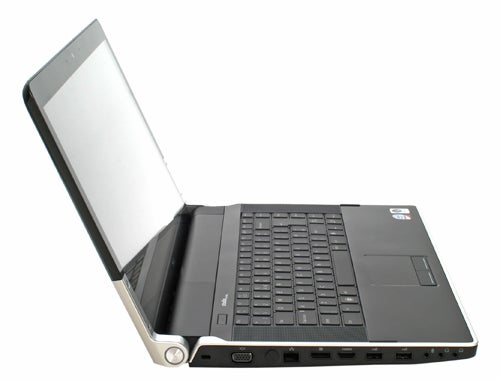
Battery life isn’t terrible, either, though it’ll be interesting to see how it stacks up against the 17in MacBook Pro, which Apple claims can last for up to eight hours thanks to its hybrid nVidia 9400M integrated graphics. Indeed, it’s curious that Dell hasn’t opted for this in the 1640, especially since its 13.3in little brother does. In any case, in the Productivity segment of MobileMark 2007, the Dell managed two hours and 22 minutes, with the lower intensity Reader test ending in two hours and 42 minutes. Neither of these are bad results for such a large notebook and you could get a little more with some optimisation.
As for gaming, the ATI Mobility Radeon 3670 and its 512MB dedicated memory do a decent job. In Trackmania Nations, at 1,920 x 1,080 with detail set to high, it achieved a smooth 35.5 frames per second – leaving enough headroom for anti-aliasing at lower detail settings. As a whole there’s enough performance here to play many modern games at reasonable settings.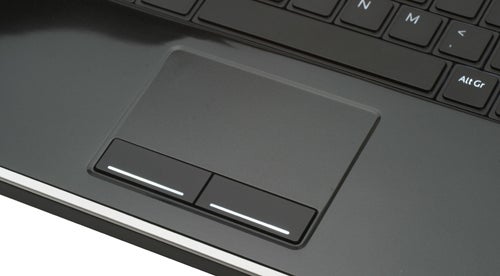
Overall, then, the Studio XPS 16 is an interesting machine. Like the 13.3in version there are a few things that could do with tweaking, such as the keyboard, but it’s basically a solid and attractive machine. We do wonder, though, whether the majority of people that are more interested in a multimedia machine than photo editing will want to pay more for the Dell’s RGB LED display over the similar HP HDX 16.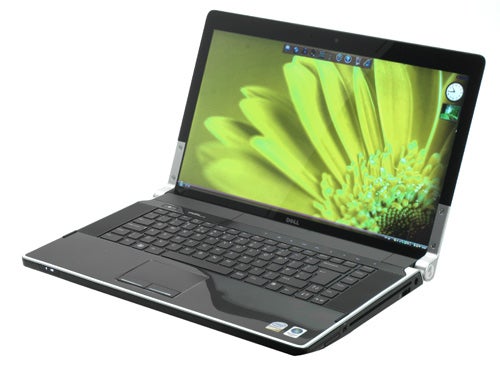
Verdict
We can’t recommend the Dell Studio XPS 16 to everyone because HP’s HDX 16 offers a similar feature set at a keener price. However, if you’ve been hankering after a notebook with desktop quality colour fidelity, then it makes a tantalising proposition – especially when, in the greater scheme of things, the option isn’t even that expensive. As such it gets a (qualified) Recommended Award.
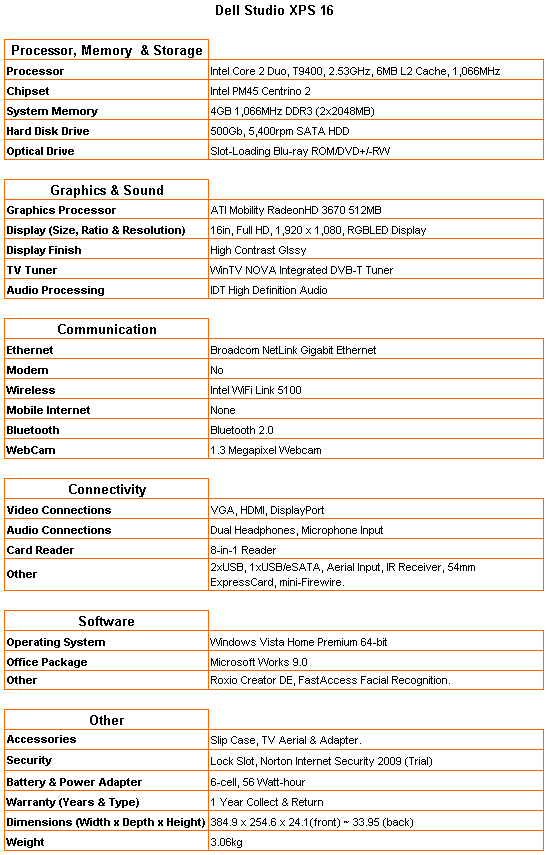
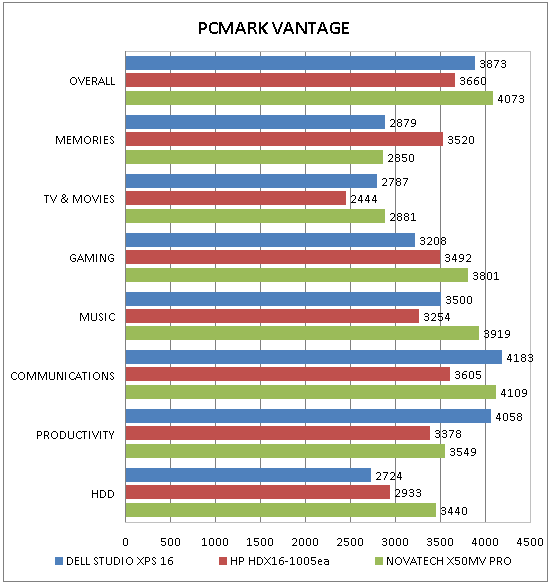
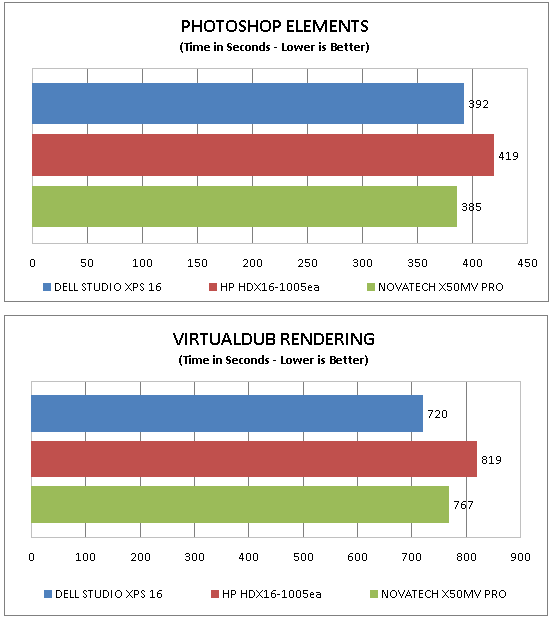
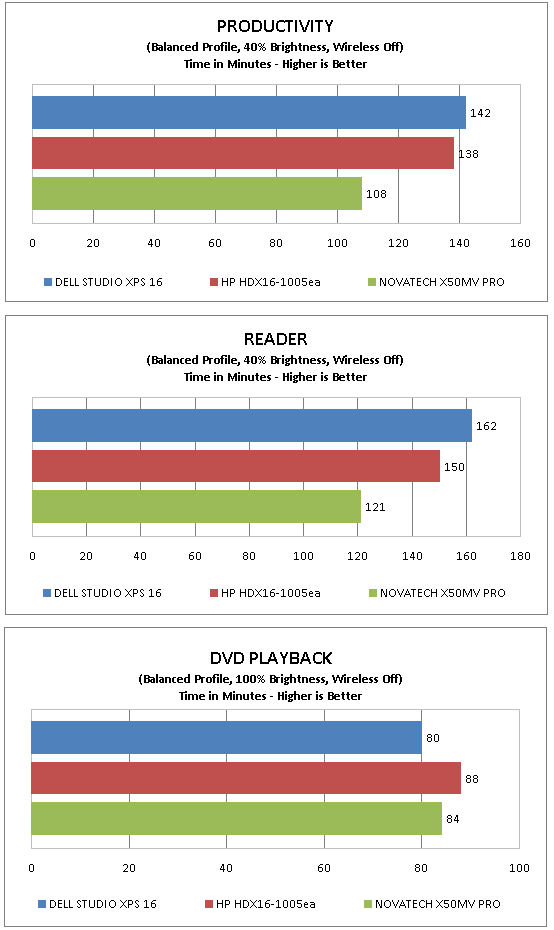
How we test laptops
Unlike other sites, we test every laptop we review thoroughly over an extended period of time. We use industry standard tests to compare features properly. We’ll always tell you what we find. We never, ever, accept money to review a product.
Trusted Score
Score in detail
-
Performance 9
-
Design 8
-
Value 7
-
Features 10

